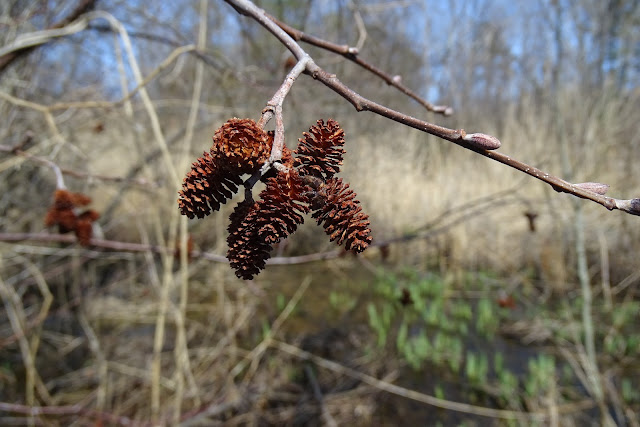Scientific analysis has freed it from blame as an allergy irritant. Goldenrod depends on insects to pollinate its flowers. The flowers' pollen grains are too heavy to drift in the air toward your sinuses.
 |
|
Tall goldenrod, Solidago altissima, which can exceed six feet of height in moist areas of Halibut Point |
 |
| L to R: Henry Ford, Thomas Edison, Harvey Firestone 2 |
 |
| Thomas Edison standing in a field of goldenrod, 1929 3 |
 |
| Edison and goldenrod specimen 2 |
 |
| A sample of goldenrod rubber at Edison's laboratory 1 |
 |
| A rubber strip made from goldenrod 1 |
After Edison's death in 1931 Ford spearheaded the quest. He corresponded with George Washington Carver in 1935, the innovative plant hybridizer at Tuskegee Institute in Alabama. As their relationship deepened productively, they traveled to each other's facilities. Ford sought to develop auto body materials, paint, and engine fuels derived from farming staples. They collaborated on the goldenrod latex project. Ultimately it was supplanted by more practical processes deriving synthetic rubber from petroleum.
 |
| George Washington Carver (L) and Henry Ford, 1942 7 |
Sources
1. "Thomas Edison, Botanist," blog Kind ofCurious.com, November 29, 2010.
2. "Thomas Edison, The Rubber Wizard of Menlo Park?", Stern Rubber Company blog, August 20, 2015.
3.
4. "Thomas Edison, Chemist", American Chemistry Society website acs.org, 2019.
5. "In Search of Thomas Edison's Botanic Treasures", New York Botanical Garden Herbarium, posted in Applied Science website, October 30, 2013.
6. "Phonograph Exhibit Hints at Rubber Invention", The Orlando Sentinel, October 4, 1992.
7. Photo taken in The Carver Nutrition Laboratory, Dearborn Michigan, 1942, TheHenryFord.org website.
8. "Soybean and Weeds Sandwiches: George Washington Carver and Henry Ford at the Tuskegee Institute", The History Engine website.























